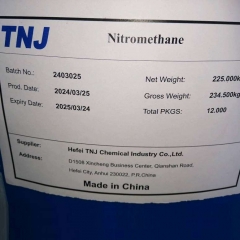Properties of Benzyl Chloride
Benzyl chloride CAS 100-44-7 is colorless flammable fluid with irritant smell, soluble in ethyl alcohol and ether, unsoluble in water. As an important synthesis intermediate, Benzyl Chloride can be applied to a variety of fields ranging from the syntheses of pharmaceuticals, agricultural chemicals, and dyestuffs to perfumes.
Appearance colorless to slightly yellow liquid
Odor pungent, aromatic
Density 1.100 g/cm3
Melting point −39 °C (−38 °F; 234 K)
Boiling point 179 °C (354 °F; 452 K)
Solubility in water, very slightly soluble (0.05% at 20 °C); soluble in ethanol, ethyl ether, chloroform, CCl4, miscible in organic solvents
Specification Item for Benzyl Chloride
Appearance Clear liquid
Benzylidene chloride, % ≤0.50Color, Hazan ≤25.00
Water, % ≤0.10
Specific gravity (Kg/M3 20C) 1099~1105
Acid value, % ≤0.01
Assay, % ≥99.0
Applications & Features of Benzyl Chloride
Benzyl chloride is used in organic synthesis for the introduction of the benzyl protecting group for alcohols (yielding the corresponding benzyl ether) and carboxylic acids (yielding the corresponding benzyl ester). Industrially, benzyl chloride is the precursor to benzyl esters which are used as plasticizers, flavorants, and perfumes. Phenylacetic acid, a precursor to pharmaceuticals, is produced from benzyl cyanide, which is generated by treatment of benzyl chloride with sodium cyanide. Quaternary ammonium salts, used as surfactants, are readily formed by alkylation of tertiary amines with benzyl chloride.
Generally, Benzyl chloride is used for leather, synthetic fibre, medical, petro-chemical, electricity, dying material, paint, metal processing industry.
- Plasticizers
- Surfactants- Oilfield
- Pharmaceuticals
- Dye stuffs
Packaging of Benzyl Chloride
200kgs per plastic drum
200kgs*80drums=16tons/20’’FCLStorage & Handling of Benzyl Chloride
Keep container in a cool, well-ventilated area. Keep container tightly closed and sealed until ready for use. Avoid all possible sources of ignition (spark or flame).
Benzyl Chloride undergoes a rapid condensation polymerization upon exposure to many metals of construction or by contamination with metallic ions. These include iron, tin, zinc, copper, aluminum and magnesium. Contact with any of these metals or any Lewis Acid Catalyst must be avoided.















 chemical.tnj
chemical.tnj +8618949823763
+8618949823763 tnjchem
tnjchem 2881500864
2881500864